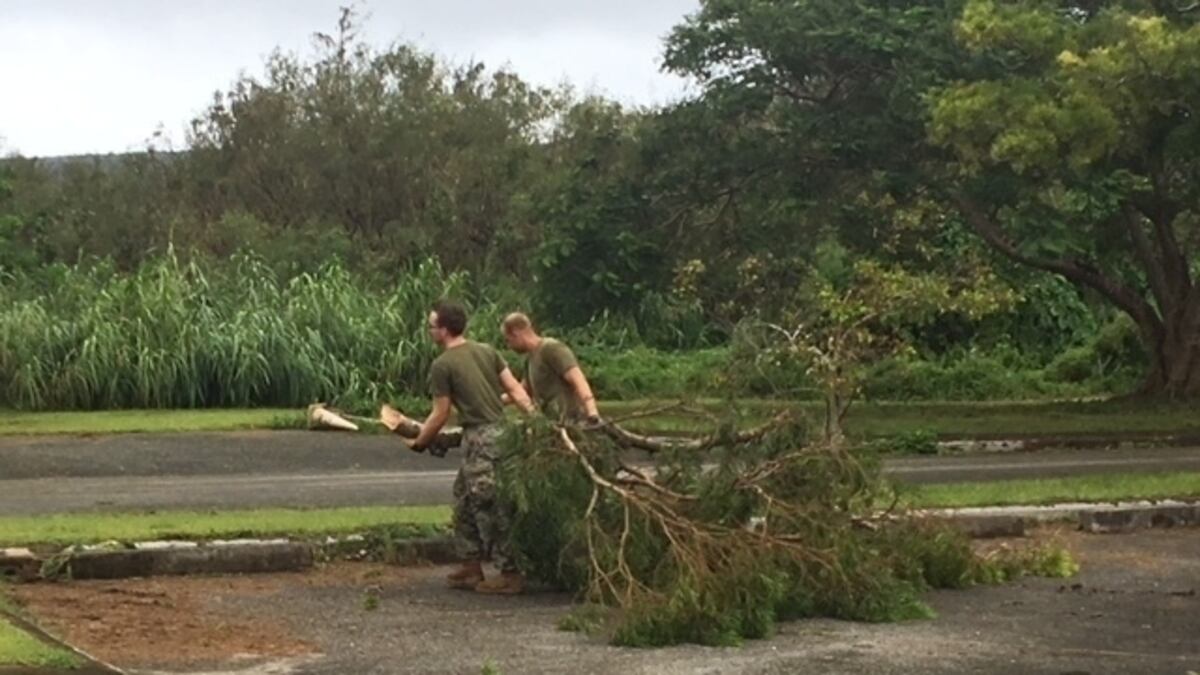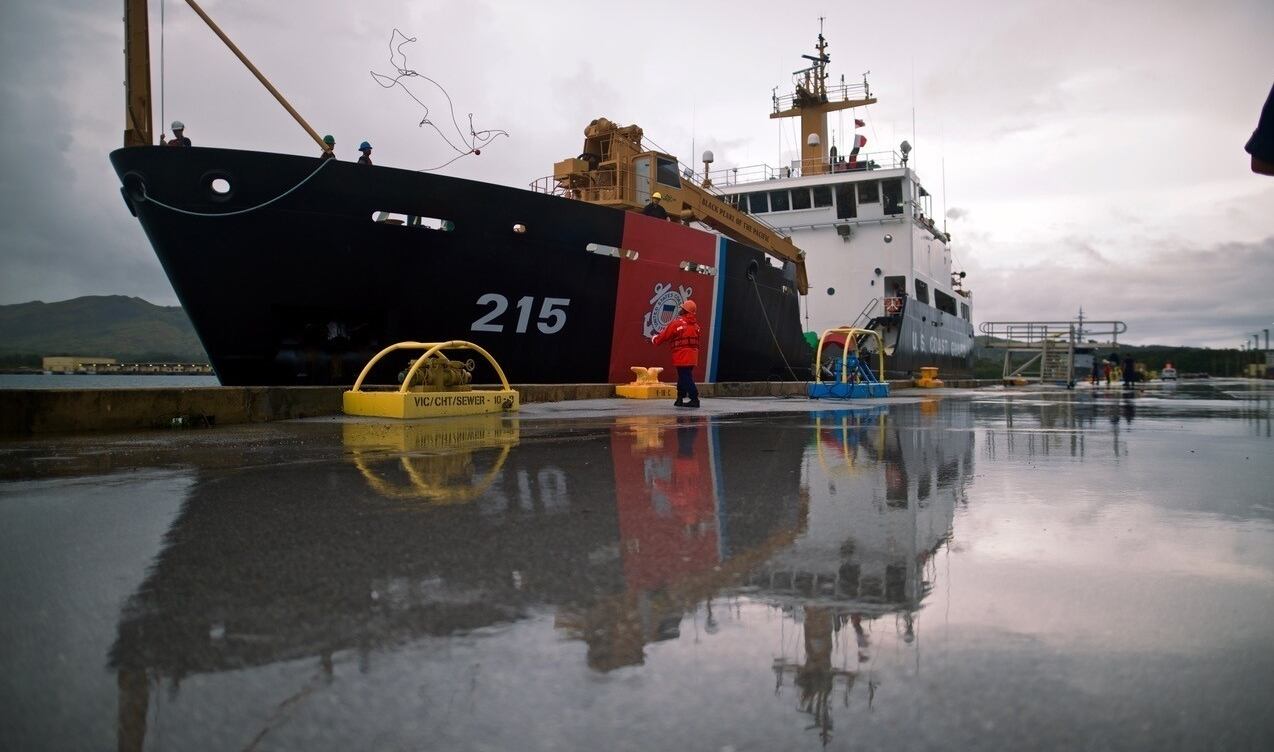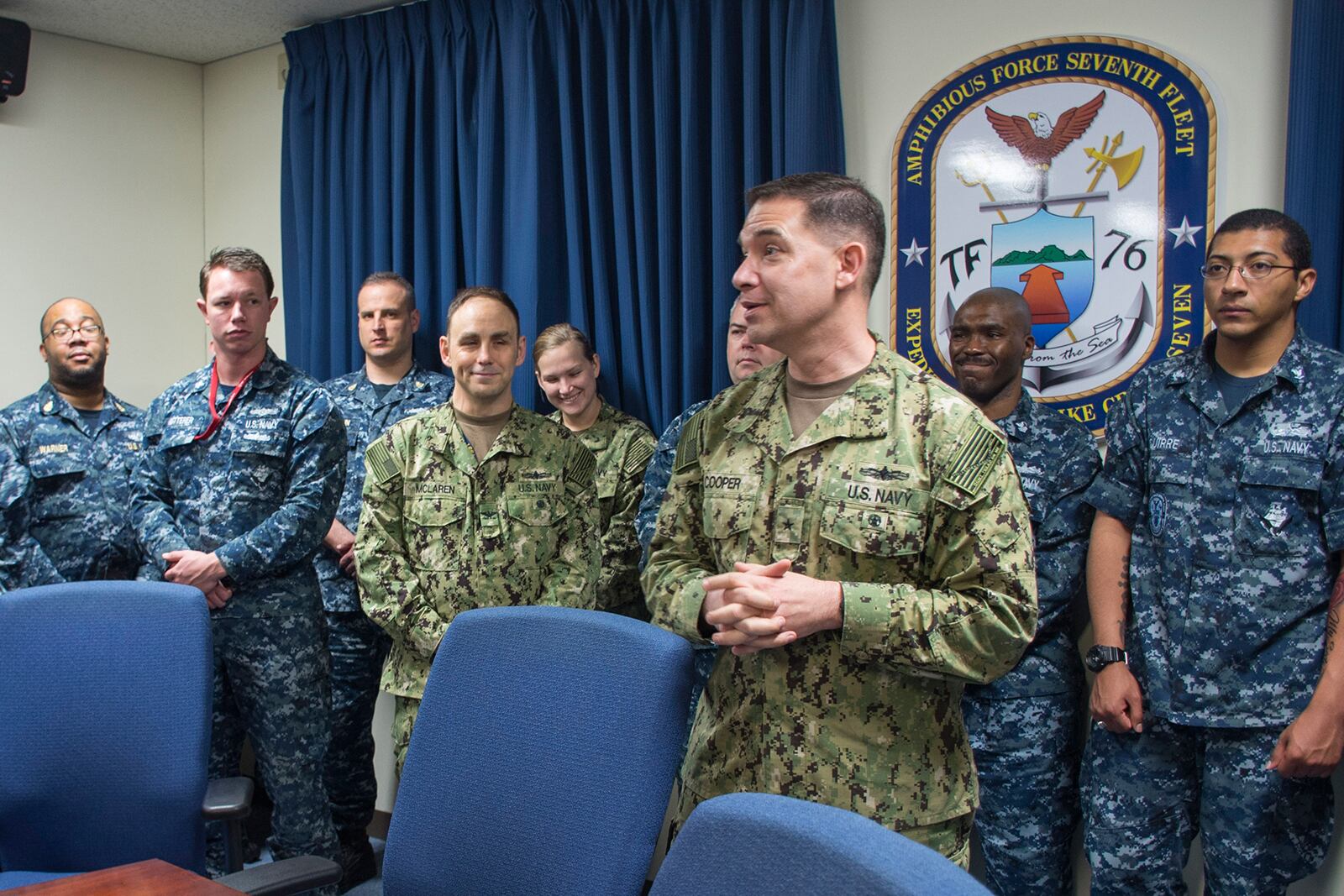With Hurricane Florence poised to punish military bases in the Carolinas and southern Virginia, efforts by the armed forces to respond to storms on the other side of the world got overlooked.
But in the Northern Marianas Islands, sailors and Marines began rescue and recovery operations on Rota Wednesday morning, hours after Typhoon Mangkhut ravaged it.
Commanded by Navy Rear Adm. Brad Cooper, Task Force 76 executed a brilliant bit of seamanship as Mangkhut barreled west toward Guam, Saipan, Tinian and Rota, scooting just beyond the reach of its powerful winds and waves and then tucking the warships behind it to trail in the typhoon’s wake.
“We safely and aggressively positioned ourselves behind the typhoon, so as soon as it passed we were able to respond,” Cooper told Navy Times early Thursday local time from the bridge of the Wasp, his amphibious flagship.
Before sunrise on Tuesday, Cooper’s Wasp, the amphibious assault ship Ashland and the 31st Marine Expeditionary Unit were off the coast of Guam, launching what would grow to more than 200 helicopter and tiltrotor aircraft sorties.
They ferried teams to survey the damage; military leaders to coordinate efforts with federal and Northern Marianas officials; and troops to unload supplies.
Because there’s already a large contingent of Coast Guard, Navy and Air Force personnel on Guam, Cooper concentrated recovery efforts on nearby Tinian, Saipan and Rota.
“You could clearly see where the damage was, right out of the gate, because the eye rolled right over Rota,” said Cooper.
When Cooper, 31st MEU commander Col. Robert “Bams” Brodie and other military leaders landed there, they quickly established communications with the task force.
There was no electricity, the hospital was damaged and the water works lacked pressure.
By early Thursday in Rota, the task force had the hospital working and tap water flowing to residents. Half of the island now has electricity.
More than 100 Marines continue to clear debris from streets, a Navy medical team is treating patients and crews continue to unload water and food.
Other Marines and Navy Seabees have stormed Rota’s sister island, Tinian, to help residents dig out.

Although Rota unfortunately bore the brunt of Mangkhut, it got lucky during the recovery phase.
That’s because Cooper’s amphibious task force not only was already off the coast of Guam for the biennial Valiant Shield maneuvers but his Marines and sailors recently finished a major humanitarian relief training exercise on Okinawa.
“It was just a matter of weeks ago. That focused the team on how to respond,” Cooper said.
The Federal Emergency Management Agency is spearheading all recovery operations in the Northern Marianas and the Ronald Reagan Carrier Strike Group is sailing nearby with extra helicopter support if necessary, but it’s been the Navy and Marines helping with the muscle.
“This will go on as long as FEMA said it requires our support,” Cooper said.
The initial Navy plan was to clear debris from the beaches so that the task force could launch utility and air-cushioned landing craft to haul supplies to shore but the Coast Guard has greenlighted the commercial ports on Rota and Tinian to open.
In a written statement emailed to Navy Times, officials in Guam said that cutter Sequoia returned there on Thursday from the Northern Marianas and declared ports and navigation conditions are safe enough for supplies to flow to the piers.

Pacific Command in Hawaii has postponed Valiant Shield while Cooper’s task force toils to help the Northern Marianas recover, but the storm continues to trundle west.
Guzzling the warm waters of the Western Pacific, it’s ballooned into Super Typhoon Mangkhut, the equivalent of a Category 5 hurricane.
Packing winds higher than 201 miles per hour and driving waves 50 feet high, the eye of the storm is about 500 miles west of Manila moving west-northwestward on a trajectory likely to tear across the northern Philippines, destroying rice crops and pancaking houses in a rural region that’s home to 10 million residents.
RELATED

It’s bigger and badder than Florence and probably as powerful as Haiyan, the super typhoon that walloped the Philippines in 2013 with winds clocked at 145 miles per hour.
Haiyan killed at least 6,329 people and caused more than $4.5 billion in damage on the Philippines, which is why Cooper and his team are tracking Mangkhut’s trek toward Luzon and then Hong Kong.
Forecasters believe the storm will make landfall near the Cagayan Valley on Saturday morning, although heavy rainfall will begin to sweep Palawan and the Zamboanga Peninsula on Friday.
Military leaders on the Wasp have yet to receive orders to keep following the storm but they’re ready to move out if necessary.
“The Department of Defense leadership is very attuned to this and watching it closely,” Cooper said.
Prine came to Navy Times after stints at the San Diego Union-Tribune and Pittsburgh Tribune-Review. He served in the Marine Corps and the Pennsylvania Army National Guard. His awards include the Joseph Galloway Award for Distinguished Reporting on the military, a first prize from Investigative Reporters & Editors and the Combat Infantryman Badge.




